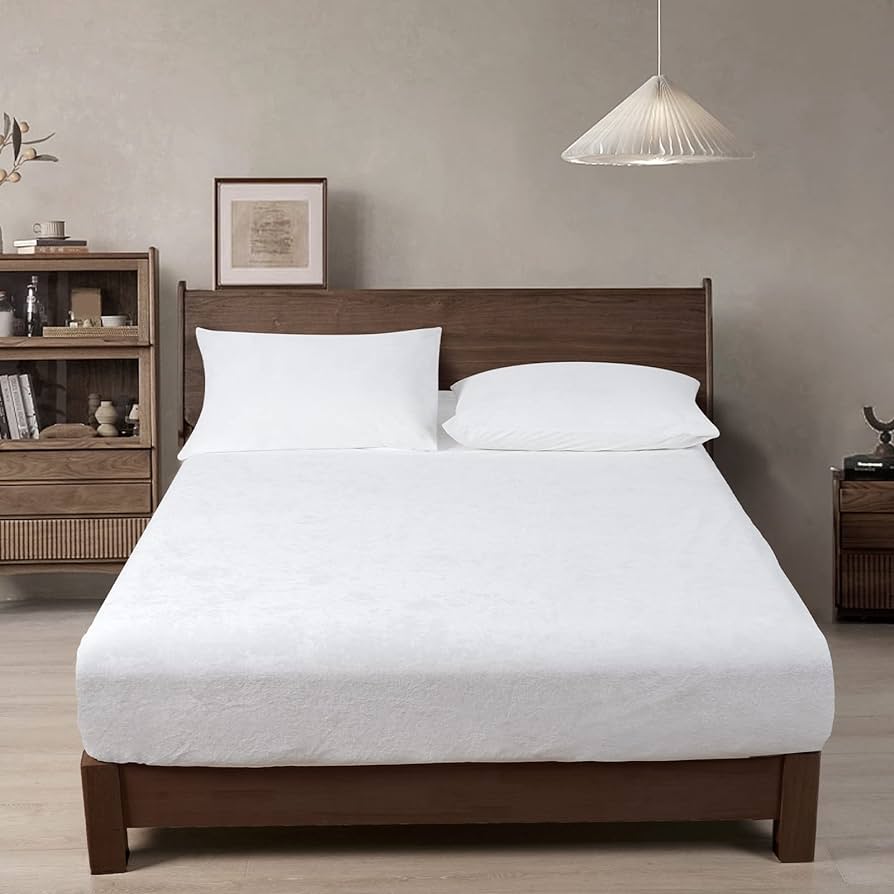Stain removal from a soft fitted sheet can frequently seem like an overwhelming task. Utilizing harsh chemicals is typically not the best course of action because of the delicate nature of most soft fabrics and the intimate contact these sheets have with our skin. Nonetheless, you can successfully remove the majority of stains and preserve the smooth, cozy texture of your soft fitted sheet by following a few easy steps. We’ll go over several stain removal techniques in this extensive guide to make sure your bedding stays as clean and cozy as ever.
Understanding the Fabric
It’s important to understand the fabric of your soft fitted sheet before beginning any stain removal process. Depending on whether it’s made of microfiber, cotton, linen, or another material, the care instructions might change. To prevent causing damage to the fabric, always refer to the care label for precise instructions. This will help you determine the best drying technique, the kind of detergent to use, and whether to use hot or cold water.
Immediate Action
Removing stains successfully requires prompt action. To absorb as much of the spill as possible, gently blot the area with a clean, dry cloth as soon as it occurs. Removing the stain by rubbing it off will help it become more embedded in the fabric’s fibers.
Pre-Treatment
A pre-treatment step can significantly impact most stains. Give it a five to ten minute rest. Enzymatic cleaners work especially well for protein-based stains like blood or perspiration. The proteins are broken down by these cleaners, which facilitates stain removal.
Choosing the Right Detergent
Choosing the right detergent is essential if you want to keep your fitted sheet soft and intact. To prevent causing damage to the fabric, use a gentle detergent without bleach. Use a detergent with enzymes to help break down the stain molecules for more stubborn stains.
Washing
Put your soft fitted sheet in the washing machine after pre-treating the stain. To avoid color transfer, it is best to wash it separately or with materials and colors that are similar. To preserve the fabric’s fibers and stop the stain from spreading, use the gentle cycle on cold water.
Before washing, you might want to soak the sheet in a solution of detergent and water for a few hours if the stain is really difficult to remove. This may aid in dislodging the stain and facilitate its removal throughout the washing process.
Natural Stain Removers
For those who would rather take a more natural approach, stains can be removed with a number of common household items. For instance, white vinegar works wonders for discoloring white surfaces and eliminating smells. While rust and discoloration can be effectively treated with lemon juice, greasy stains can be treated with baking soda. Before washing, apply your preferred natural stain remover to the impacted area and let it sit.
Check Before Drying
Examine the stained area after washing the sheet before putting it in the dryer. The stain may become set by the dryer’s heat, making removal extremely difficult. Do the pre-treatment and washing procedures again if the stain is still noticeable.
Drying
For your soft fitted sheet, air drying is the most gentle option. Use the lowest heat setting on the dryer if you must in order to avoid shrinking the fabric and causing damage. To keep the sheet soft and prevent wrinkles, remove it from the dryer while it’s still slightly damp.
Tough Stains
Certain stains, such as those from wine, coffee, or ink, might call for a more focused method. While hydrogen peroxide can help lift red wine stains, rubbing alcohol can be useful for ink stains. To make sure these solutions won’t harm the fabric, always test them first on a tiny, discrete area.
Regular Maintenance
Washing your soft fitted sheet on a regular basis helps keep stains from setting in addition to keeping it clean. Usually, washing once a week is plenty, but you might need to modify this depending on your own needs and preferences.
Professional Cleaning
Professional cleaning might be your best bet if the stain is extremely difficult to remove or the fabric is delicate. Dry cleaners can remove stubborn stains from fabric without causing damage because they have access to specific cleaning solutions and methods.
Prevention
Avoiding stains in the first place is the best strategy for handling them. To help protect your soft fitted sheet from spills and stains, place a mattress protector underneath it. Likewise, consuming food or beverages away from bed lowers the possibility of unintentional spills.
Conclusion
Although stains on your soft fitted sheet can be annoying, they don’t have to stay that way. Understanding the fabric, moving fast, and adhering to these precise instructions will help you remove the majority of stains and keep your bedding comfortable and soft. It is important to treat stains as soon as possible and carefully, regardless of whether you choose to use natural solutions, conventional washing techniques, or expert cleaning. Your soft fitted sheets can last for many years as a warm and inviting component of your bedding set with routine care and a little know-how.


